According to Luxe Digital’s recent report, the proportion of global luxury sector sales made online is expected to triple by 2025, reaching $91 billion.
The report also found that a consumer’s online experience influences at least 40% of all luxury purchases. If you’re a high-end retailer, you want to find new ways to engage well-off customers online.
Where can you place your bets to drive luxury sales? This post highlights how you can position your luxury brand for success.
What is luxury ecommerce?
Luxury ecommerce refers to selling high-end, often designer, goods online. Brands selling luxury products and services offer customers an exclusive shopping experience, from personalized referrals to unique packaging that gives the feeling of opulence from website to doorstep.
Luxury ecommerce examples
Khaite
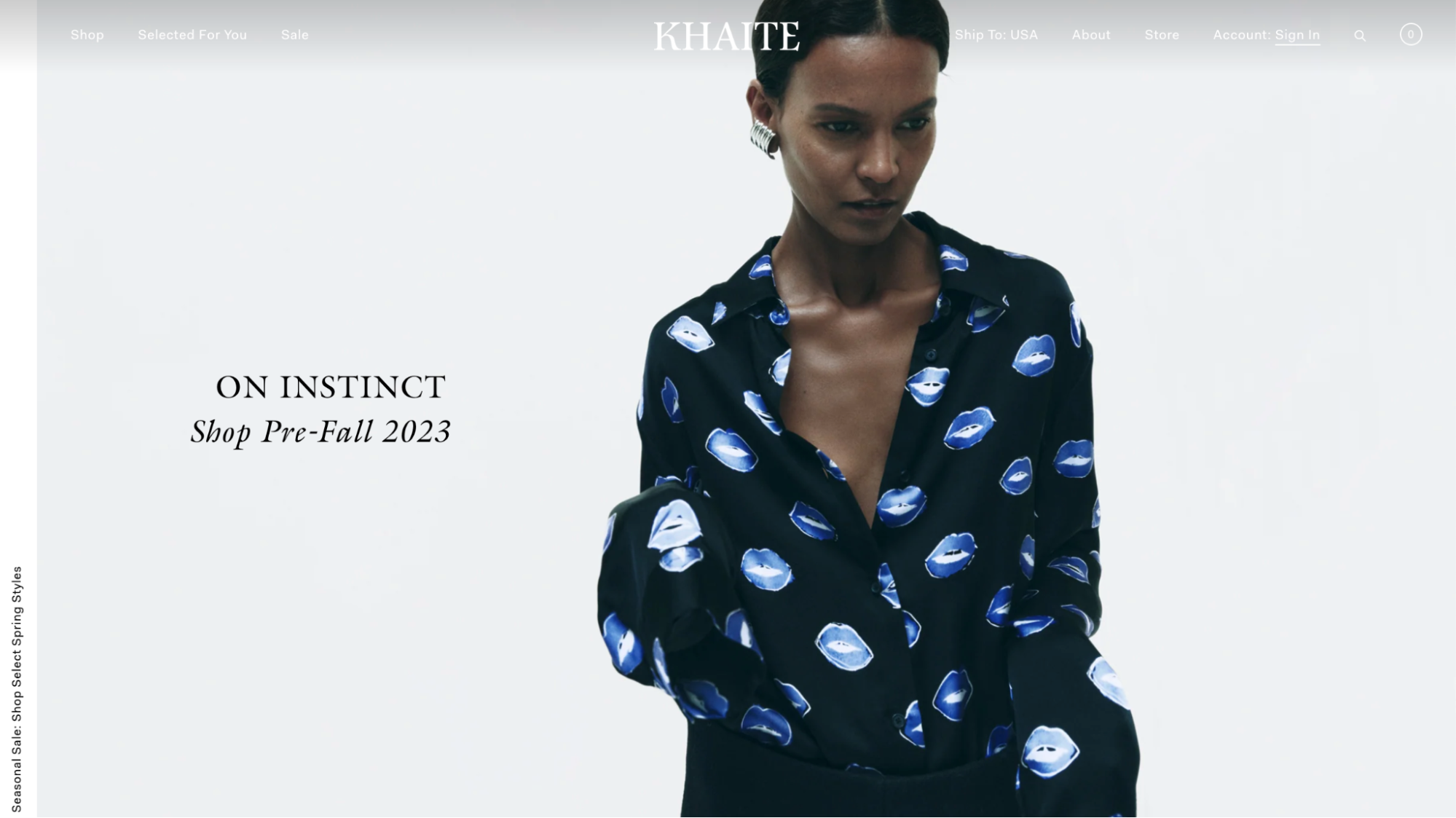
Homepage of luxury retailer and Shopify merchant, Khaite.
Khaite’s luxury ecommerce experience starts with its website design. The minute you land on the clothing brand’s homepage, you’re met with sophisticated aesthetics. Khaite’s site gives a polished and high-end look with a striking color palette portraying an exclusive feel. The images are striking, and photography has an editorial style like a fashion magazine.
Khaite’s checkout page continues to serve with a black background and brand fonts. It’s also streamlined with express checkout options like Shop Pay.
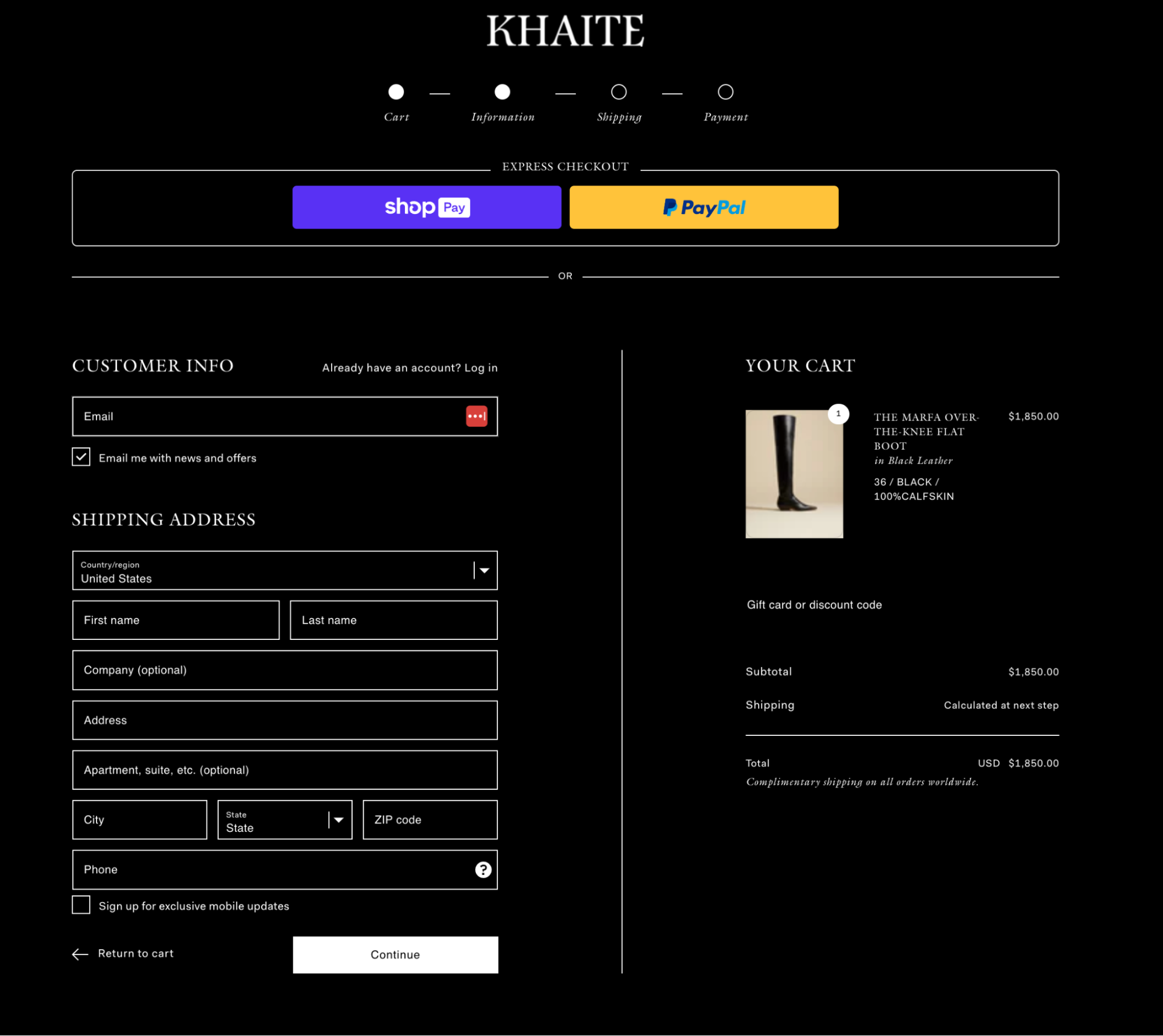
Khaite’s checkout page reflecting its brand aesthetic.
Besides the brand’s ecommerce website, Khaite shares updated styles on Instagram. Its association with celebrities and models has also earned it more than 27 million views on TikTok through the hashtag #Khaite.
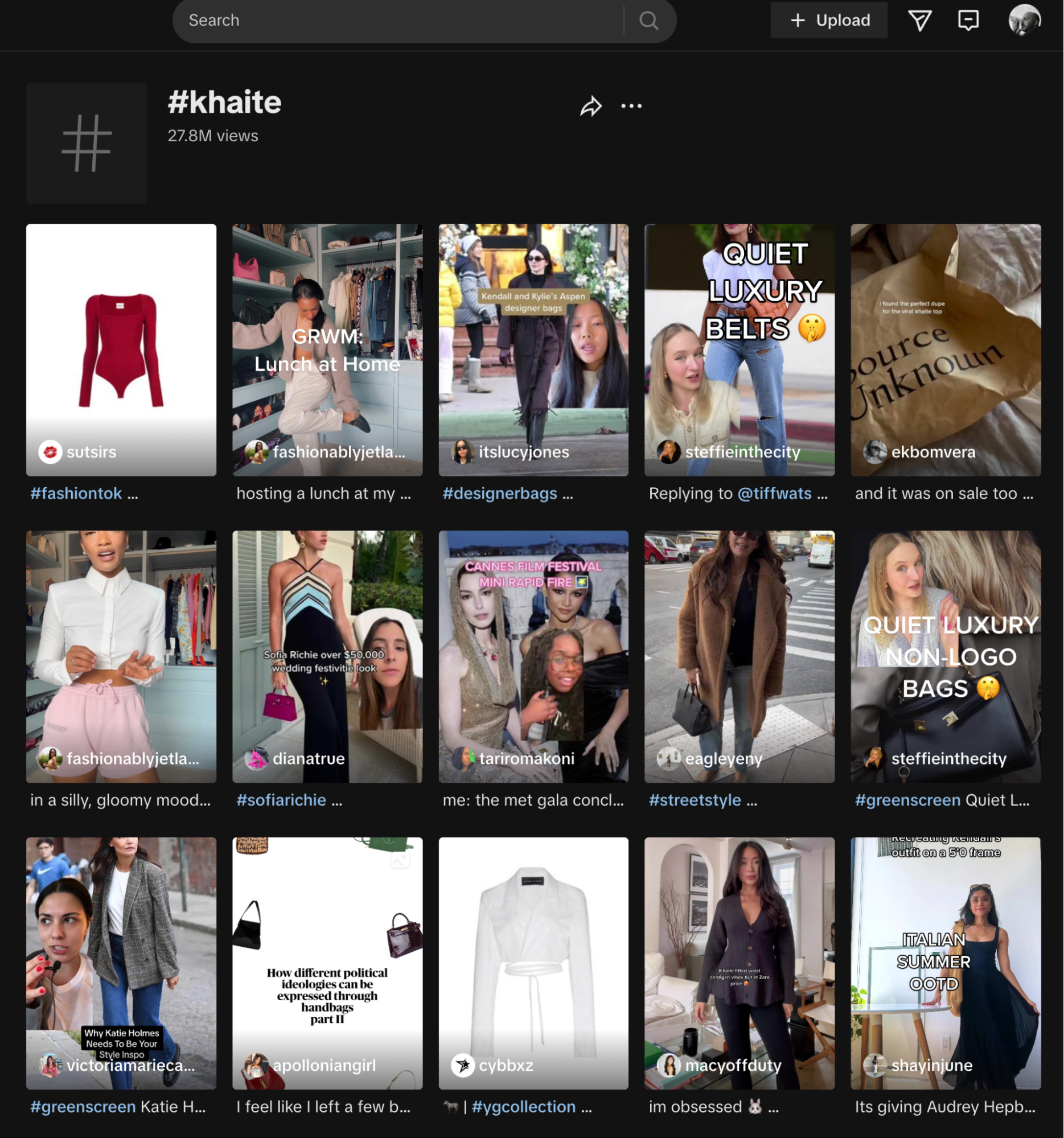
Khaite gets over 27 million views through its hashtag on TikTok.
You’ll find people tagging Khaite’s fashion shows, celebrity looks, and outfits of the day with the brand’s upscale clothing, increasing the brand’s presence and reach online.
SKIMS
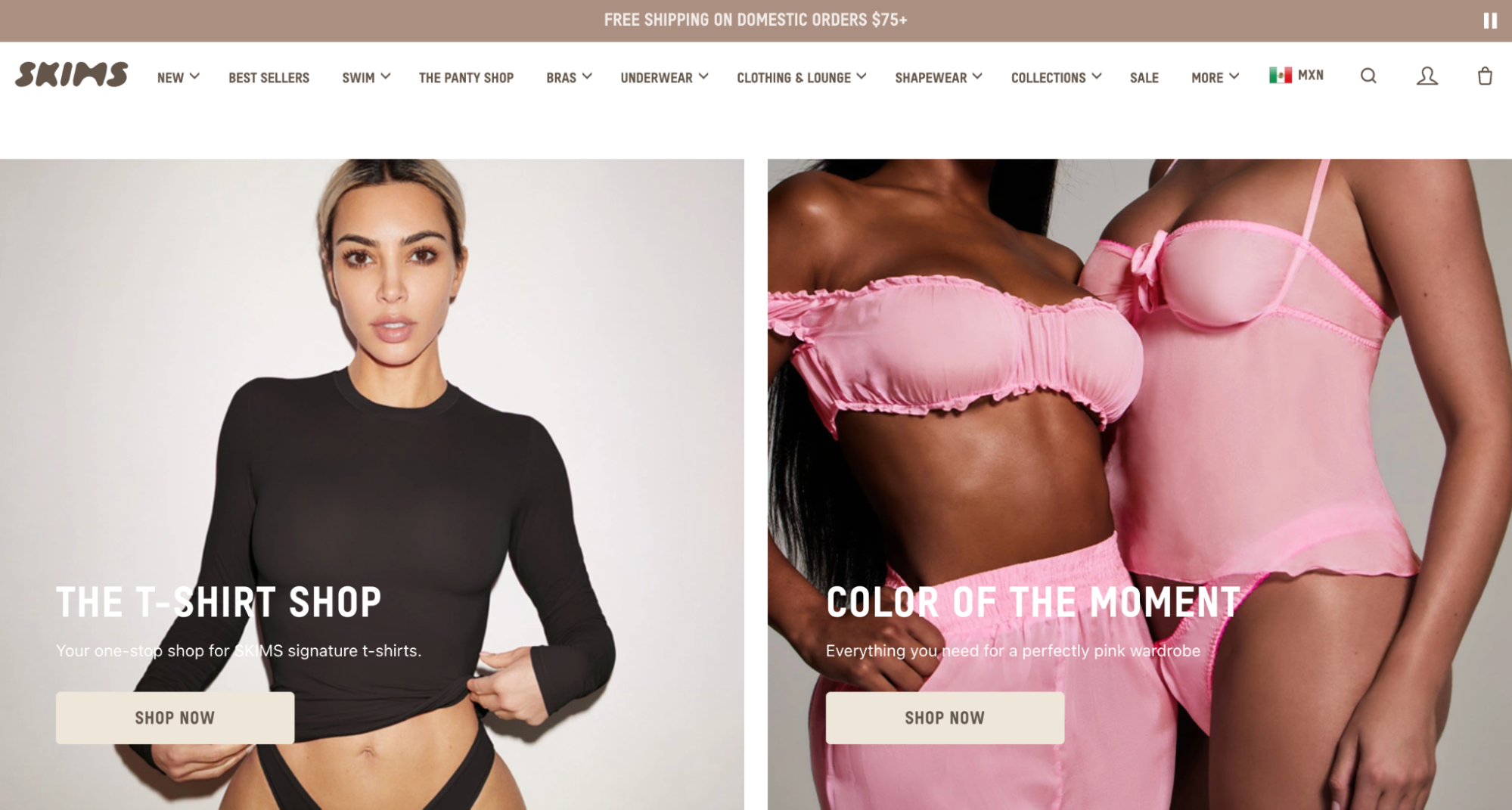
Homepage of shapewear retailer SKIMS
SKIMS, founded by Kim Kardashian, offers a luxury experience by providing innovative shapewear, underwear, and loungewear. Its website is modern and easy to navigate. Each product is showcased using diverse models to show the inclusivity of the brand.
Much of SKIMS luxury branding comes from Kim Kardashian, an influencer associated with glamorous outfits, expensive apartments, private jets, and an overall coveted lifestyle. But the brand also ventured out, collaborating with traditional fashion houses like Fendi and Grammy Award winner SZA for promotion.
Bremont
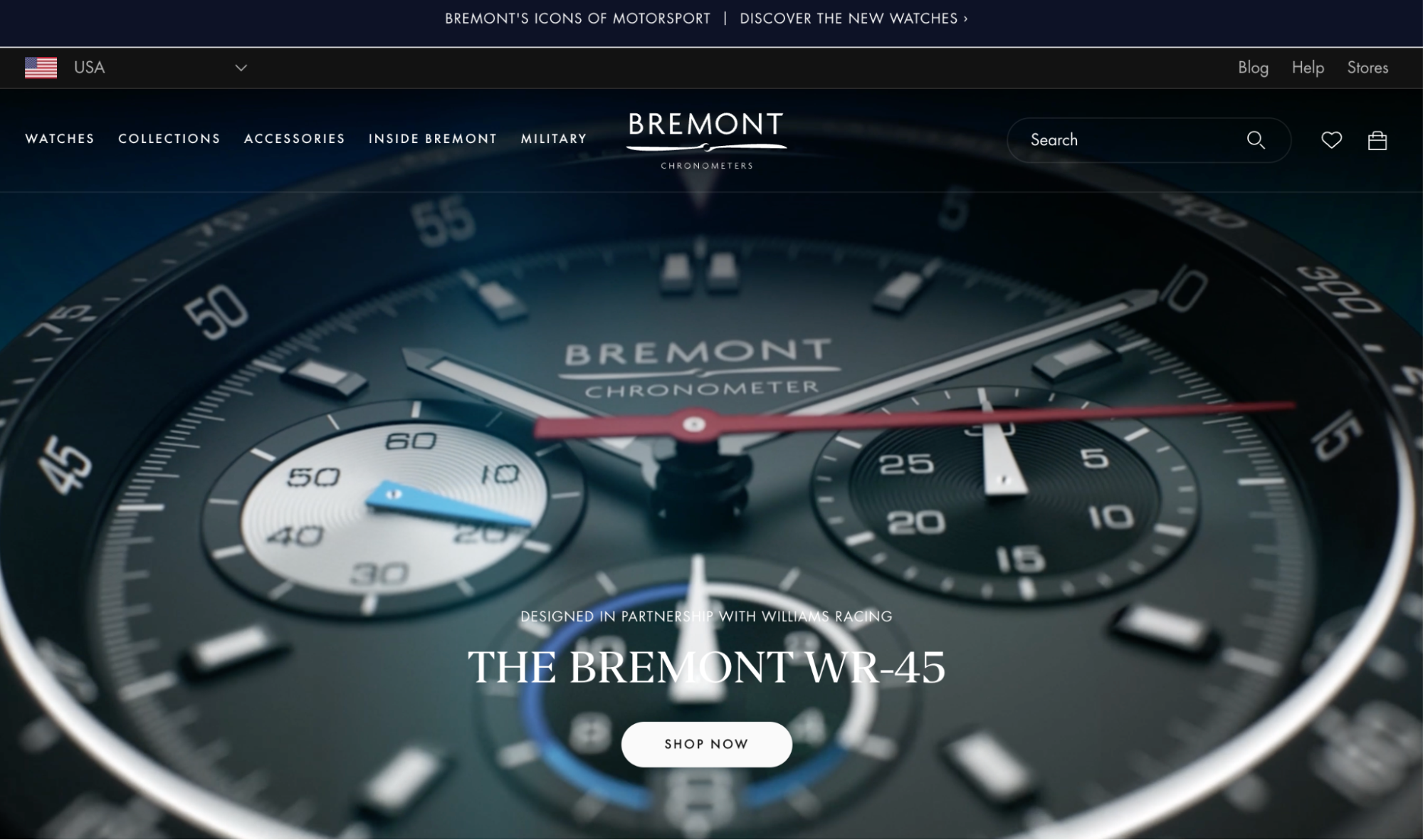
Homepage for luxury watch brand Bremont.
Bremont is a renowned watch company based in the UK. The brand has a rich history and tells its story through its website with immaculate imagery and video.
Bremont works with militaries around the world to create watches for them. They also partner with elite brands, like Williams Racing, one of the world’s leading Formula One teams. Every aspect of the website, from the fonts and colors to the buttons and icons, are carefully chosen to reflect the brand’s image and quality standards.
Luxury ecommerce tips
1. Target millennials and Gen Z
The luxury goods market has reached a new normal of lower growth. To succeed, brands will need to focus on anticipating and catering to younger consumers’ needs.
Research by Bain & Company and Farfetch estimates millennials will represent 40% of the global luxury market by 2025. Analysts also say the appeal of luxury products for Gen Z consumers is tied to a surge in wealth creation the past few years, along with social media.
To truly resonate with millennials, luxury fashion brands must also rethink distribution channels and product offerings. They’ve got to focus on what millennials are most likely to buy—right now, it’s comfortable, yet high-end items.
2. Tell a good story
Social media is the one of the most common ways buyers discover new products—and you can help them love your brand by engaging with them meaningfully. This is especially critical during their discovery phase of your brand.
To boost engagement, create stories that resonate and motivate them to like your posts and respond through comments.
On the other side of engagement, you should be responsive to direct messages or comments. Take advantage of the opportunity to show off your brand personality—be helpful, and highlight your appreciation for their business.
Luxury brands have a big advantage over other companies: a deep history. Chanel, the second most recognized luxury brand in the world, has a heritage dating back more than 100 years. The brand shares its stories through the Inside Chanel series on its ecommerce site. It features 32 short films telling the story of culturally defining moments, such as how No. 5 came to life.
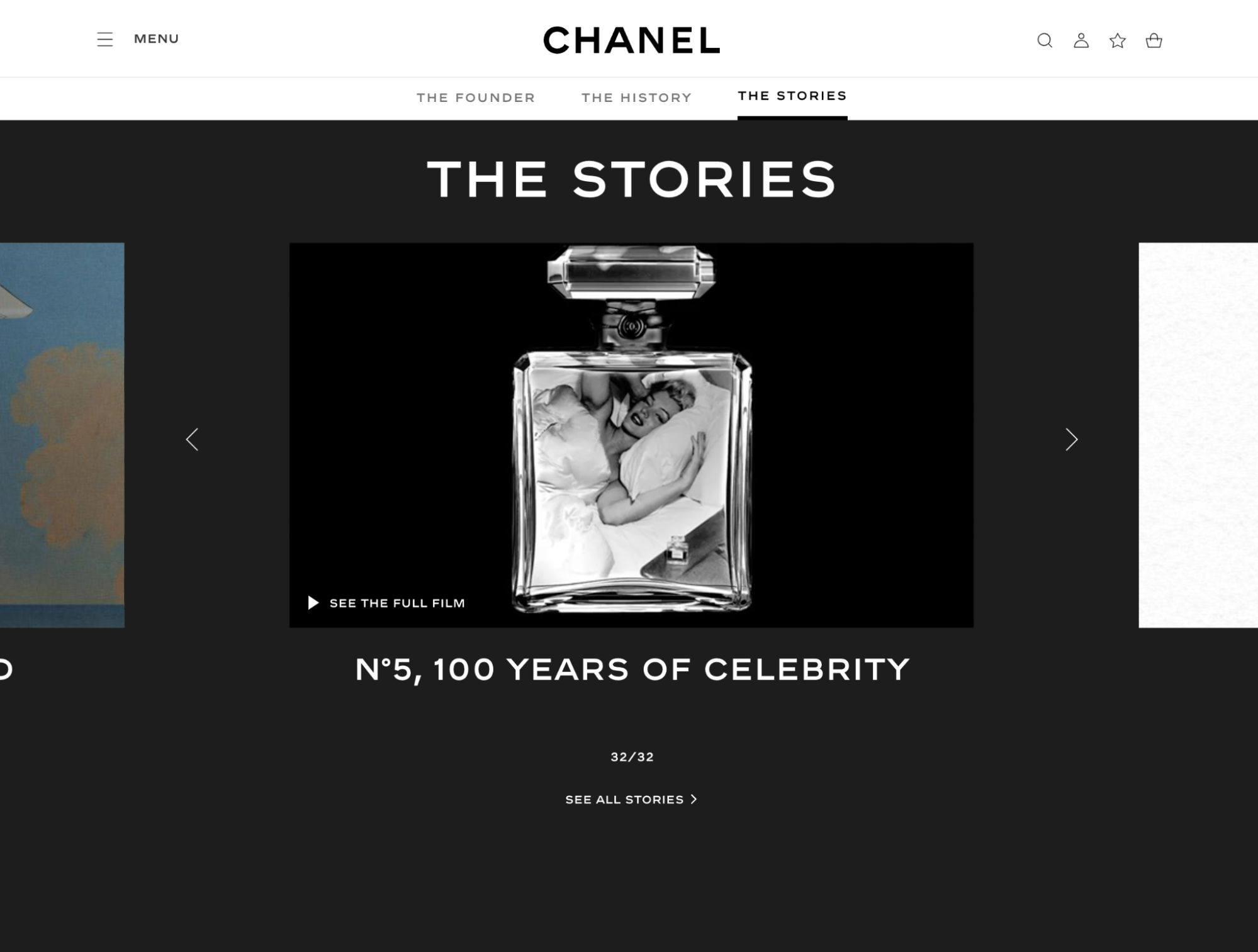
Browsers can scroll through 32 short films on the Inside Chanel landing page.
Despite its rich history, Burberry takes another approach to storytelling with Burberry Acoustic. The brand invites British musicians to perform live, and then Burberry promotes it on social media and its website.
Got a long brand history? Here are some ideas:
-
Determine key moments in your brand and turn it into a short film.
-
Give insight into the manufacturing process behind your bestselling items.
-
Incorporate celebrities or influencers into your store and share the content on social media.
3. Offer fast shipping or pickup options
Luxury brands must boost their ecommerce investments to offer a seamless multichannel shopping experience. One of the best ways to stand out isn’t revolutionary but makes all the difference: offering fast and free shipping.
With so many brands offering same-day delivery in many markets, some high-end ecommerce stores have followed suit. Louis Vuitton offers complimentary delivery or the ability to pick-up or return items in-store, and duties are waived for international orders.
4. Personalize the journey
The luxury market has known the importance of personalization for years. Some 70% of consumers spend more with companies that offer personalized customer experiences.
Luxury shoppers are used to getting special, individualized treatment in high-end stores. They’re treated like a VIP, with access to personal shoppers and exclusive shopping events.
Some stores also offer to deliver personalized selections to clients for last-minute fashion emergencies.The personalized experience is another reason why millennials like to visit a store first. With innovations like artificial intelligence and machine learning, though, they can get a similar customized experience online.
In an increasingly global ecommerce market, casual luxury brand Rebecca Minkoff personalizes its global experience with IP geolocation. It’s a smart strategy because unexpected costs like exchange rates can heavily impact a customer’s likelihood of abandoning their cart.
The luxury ecommerce site updates currencies automatically in more than 100 countries and over 70 currencies. That way, customers know exactly what they’ll pay before they add to cart. Shoppers can also select their preferred location and currency.
5. Be a digital-first brand
Digitally native luxury fashion brands have an advantage. These businesses have the benefit of having captured the hearts and minds of millennial shoppers. And they’re moving into the physical retail space.
Mr. Porter is the brother site of Net-A-Porter. It caters to men’s fashion and lifestyle luxury brands, which is another growing luxury customer base. Like Net-A-Porter, Mr. Porter offers premium omnichannel assistance to its top customers, known as EIPs (or extremely important people).
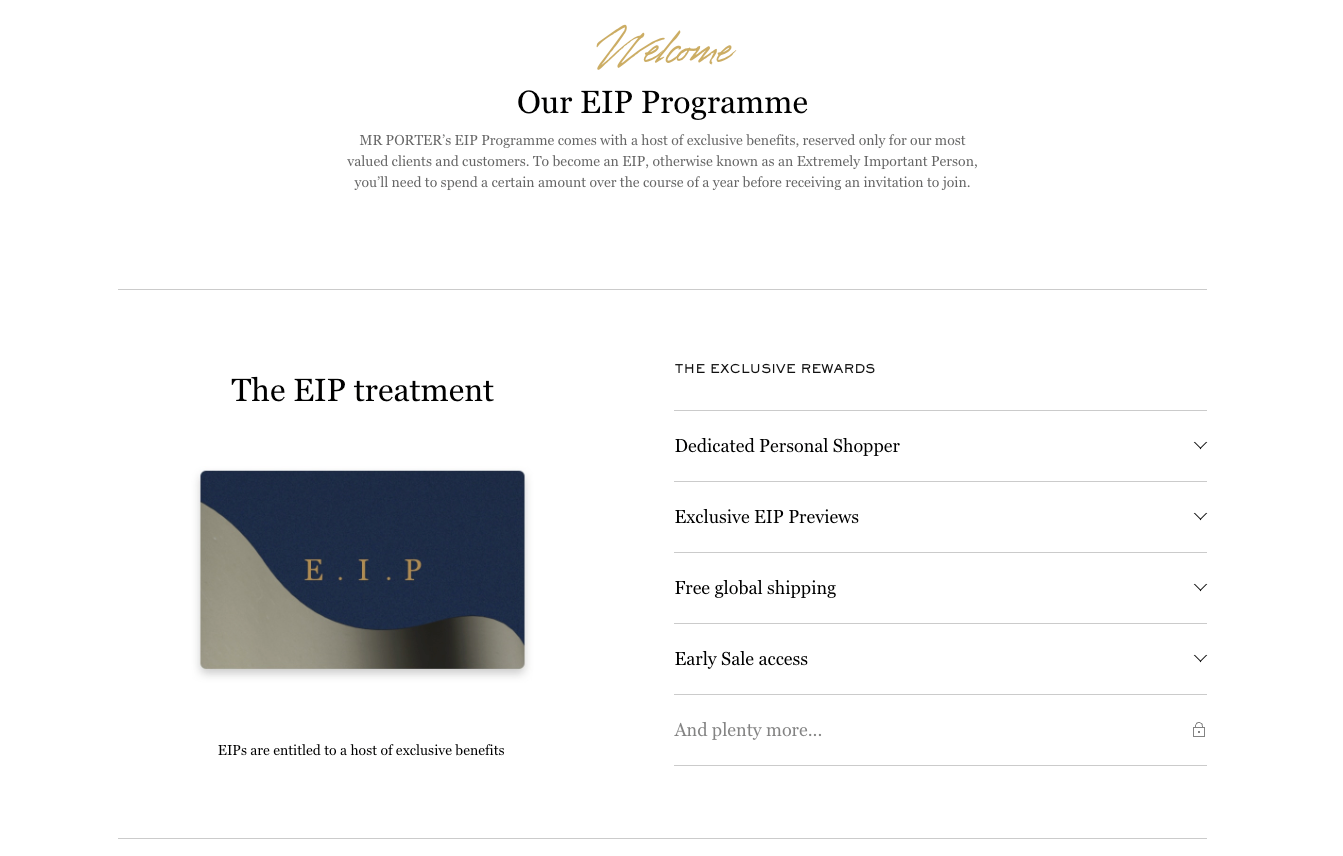
The service includes a dedicated personal shopper and early access to sales and product launches with reserved prices. Non-EIPs can access 24/7 customer care or fashion consultation by phone, email, or live chat.
For those shopping on its app, carts and wish lists are automatically synced with Mr. Porter’s online accounts. It’s a seamless on-the-go shopping experience.
Customers don’t have to request VIP treatment to receive it. Ecommerce automation can help you set up an always-on VIP experience by identifying and segmenting important shoppers with back-end workflows. These include a prompt to send your VIPs handwritten notes when they spend over a certain amount in your online store.
Luxury fashion retail stores take note. Ecommerce can offer an equally engaging customer experience with the right tools. and the technology is getting better every day.
Adapting to the new wave of luxury shopping
To grow online, traditional brands need to adapt and embrace the luxury shopping tips we’ve outlined. Chanel and Louis Vuitton have proven that the ecommerce opportunity is there.
Luxury fashion businesses must embrace social and environmental responsibility, adapt their product offerings for a growing customer base, and provide more experiential online shopping options.
These combined tactics will help you future-proof your luxury fashion business and win with ecommerce.
Read more
- Short-Term Digital Marketing Strategies to Help Online Retailers Through COVID-19
- 10 Best Books Recommended By Ecommerce Leaders (+ Lessons Learned)
- The 9 Biggest Consumer Behavior Trends That Will Shape 2023
- Social Commerce Strategy: Improve Your Social Selling With These 9 Best Practices
- 10 Lessons From the Fastest Growing Consumer Electronics Websites
- B2B Mobile Commerce: Everything You Need to Know
- Augmented Reality in Commerce
- Six Must-Have Technologies to Build the Best Ecommerce Tech Stack
- Composable Commerce: What It Means and if It’s Right for Your Business
Luxury ecommerce FAQ
Do luxury brands use Shopify?
Shopify is a popular ecommerce platform among luxury brands because of its customization options, ease of use, and robust infrastructure for creating a great shopping experience. Some luxury websites include SKIMS, Bremont, and Khaite, and Victoria Beckham.
Where is the best place to buy luxury goods online?
The best place to buy luxury goods online varies depending on what you want. But websites like Net-a-Porter, Farfetch, and Saks Fifth Avenue are popular for their selection of high-end fashion and accessories. Luxury brands often also sell directly from their own websites.
What is the most popular luxury brand?
According to Statista, the five most popular luxury brands are Chanel, Gucci, Louis Vuitton, Prada, and Dior.
What are the benefits of selling luxury goods online?
Selling luxury goods online has many benefits, including a wider reach to international customers, the chance to provide detailed product descriptions and high-quality images for an informed purchase, and the convenience for customers to shop anytime, anywhere. It also allows brands to collect valuable consumer data to tailor their marketing strategies.


